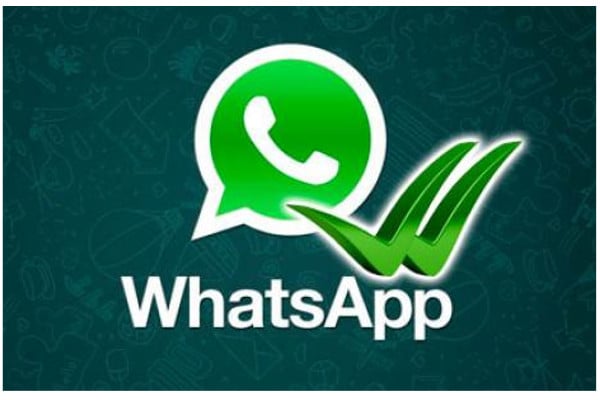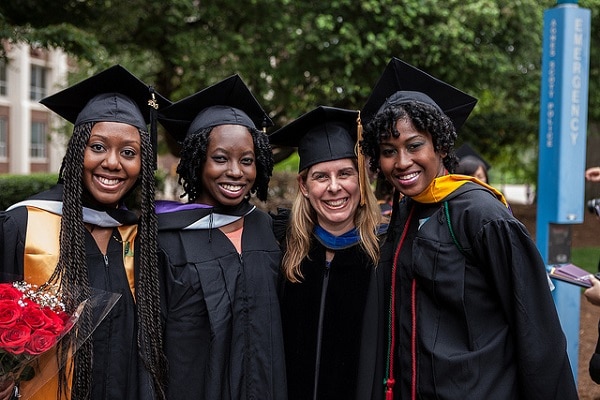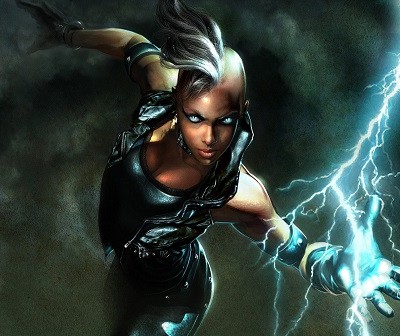Source: The Verge
Where Are the People of Color in the New ‘Cinderella’ Movie?
Back in August, Cinderella on Broadway announced its first African-American lead to wear the glass slippers, Keke Palmer. Your standard reaction to the diverse casting was probably something like, “Oh, that’s nice,” or “It’s a little weird we’re still having ‘firsts’ like this in 2014,” but somewhere in another building, Cinderella’s movie casting director leapt from her chair, fingered through her filing cabinet, and studied their lineup like, “ah sh*t.” Disney released its official trailer for 2015’s reboot of the Cinderella and it has the diversity of a Klansmen meeting.
Introducing the classic fairy tale to a new generation of children, Disney tossed the memory of 1997 for a cast more homogeneous than identical twins. Hollywood made a Dorian Grey-style wager for Sony Pictures’ Annie: to be greenlit, and one day someone will find the Blu-Ray of Cinderella in an attic getting older and whiter. In fact, the only non-white person in the trailer is the same forgettable Black throwaway character from season 2 of Game of Thrones. The casting director, let’s call her Lucy Bevan, frantically fanned through piles of headshots for her token before Robb Stark walked in her office like “I know just the guy.” She thanked him graciously, and they hugged.
Surprisingly, after the addition of Xaro Xhoan Daxos, Cinderella actually includes some riveting characters of color, according to IMDB. The official cast reveals complex characters of color such as “Captain.” We can assume he is the captain of an army platoon, or maybe a boat. I can’t wait to see the dynamic struggles of “Palace Guard.” The characters “Ball Guest” and “Ball Dancers” are rumored to offer commentary on queer identities of ballroom dance in 17th century France. And who is likely to forget the nuanced portrayal of the character “Townsfolk”? A female character of color, Princess Mei Mei, even has a name and is speculated to speak in a complete sentence with a verb.
This isn’t an indictment on the soundness of the film — it might be very good — but I’m less than excited because I don’t care about films that show a world without my family in it. I dedicate my time to family movies that dedicated theirs to consider the messages they send to children, and include inclusiveness and beauty, because, yes, they’re that important.
<iframe width=”560″ height=”315″ src=”//www.youtube.com/embed/McQ_cCBaiac” frameborder=”0″ allowfullscreen></iframe>
Read more from Lauren Bullock at blacknerdproblems.com
The Ease of Creating Strong Black Female Characters for Comics
Creating well-rounded female characters in comics isn’t hard. Just look around you for inspiration, and if you can’t find real-life representations, you need to expand your own circle.
Diversity in comics is usually one of the main topics of the conversations I have when discussing creating the “Legend of the Mantamaji” with the press. And interestingly, the discussion of race tends to be shorter than the discussion of the portrayal of female characters in the series.
The reality is, creating strong, well-rounded, fully fleshed females isn’t any more difficult than creating any other type of character – and inspiration isn’t hard to find.
In my life and in my career, all the people who have been behind my advancement have been strong women.
When I first came to Los Angeles and started working on comedies, the creators and people in charge were women:
- The executive producer who got me in the Directors Guild of America as an assistant director.
- The line producer who was behind me getting my opportunity to direct.
They were all the same in that they were smart, strong and extremely talented. They were also mothers. I am lucky that, in my life, I have always been surrounded by women who were strong and who were hustlers. I have always seen women who were doing everything you traditionally saw men do and doing it well.
My mom is a lifelong educator who still consults at John Carroll University in Cleveland in multi-cultural affairs. My wife owns her own thriving business. So when I created Sydney, Cornerstone and the other female characters in “Legend of the Mantamaji,” I was drawing on people I have seen, known, worked with or worked for.
Sanctuants from the “Legend of the Mantamaji” series are explicitly mentioned as equal to the male Mantamaji warriors. It’s an unusual call out among the comic industry, but I didn’t want any of the female leads to be any less than the main hero, just different. It makes the story’s history so much richer.
If I had to boil down three things I wanted to accomplish with the female characters in “Legend of the Mantamaji,” I have to say I wanted to create a new batch of heroes who are full, real characters; I wanted to make sure people were interested in their journey, and I wanted to give women readers what they have been asking for and deserve from comic book creators – real representation.
Read more from Eric Dean Seaton at legendofthemantamaji.com
11 Perfect Gift Ideas to Spark Your Child’s Engineering Curiosity
STEM toys are hot, no doubt about it. Lego announced revenues earlier this fall that made it the largest toy maker in the world for the first time ever. As Lego’s success shows, the “E” in STEM, engineering, is a natural fit for younger kids who can design, build, tweak and tinker for hours on end. Indeed, formal engineering instruction is entering more and more elementary schools, through innovative programs like Engineering is Elementary and others. And resources for informal engineering education are finding receptive audiences, as we’ve seen with the success of our own elementary-school book, “Dream, Invent, Create.”
Engineering the Holidays
But there’s lots more technical toy fun to be had than just with Legos. We found 11 great engineering-flavored toys, suitable for ages from 2 to, well, as far “up” as you like.
Magna-Tiles or Magformers. 2 and up. Coming in sets of colorful squares and triangles, these plastic tiles have magnets at the edges. They attach in any fashion imaginable, enabling the construction of houses, castles, rockets, ships, small towns and whatever else kids can imagine. One of the favorite activities in my kids’ preschool classroom, these tiles always attract a crowd after the first kid pulls them out. Some people report that Magformers have stronger magnets and are easier for small hands to maneuver.
Wedgits. 2 – 6 years. These are brightly colored building blocks of different shapes and sizes that stack, nest, balance, pile – and fall down if not arranged by sound structural principles. Full instructions are provided, but not really necessary. Kids will learn about angles, balance, weight and force, building objects of their own design or following the guidance of design cards that lead them through increasingly challenging projects. The starter kit is easy to expand upon, as kids grow and fine motor and building skills increase.
This Smart Bracelet Is a High-Fashion Product, But Is It Sexy Enough for a Woman to Wear?
Chelsea Intel and Opening Ceremony announced the launch of their first collaboration that happens to be a connected smart bracelet called the MICA. It stands alone from your smartphone, as it has cellular radio with 2 years free data from partner AT&T. Jordan spoke to the VP of business development Ayse Ildeniz.
Source: TechCrunch
Astrology or Science? Calculate your Geek Zodiac
Navigating this complex world has never been more difficult. And as we yearn for our destiny, our purpose and, perhaps most importantly, our sense of self, the Geek Zodiac is here to help. The Geek Zodiac transforms astrology with a novel spin on an old science. Based on the ancient Chinese system, the GZ replaces the 12 animals with the most iconic archetypes in popular culture and creates a gorgeous and meaningful array of superheroes that we can all relate and aspire to. Each week, the GZ delivers a fortune cookie to your email box with humor, advice and some geeky insight. Having difficulty relating to others? Perhaps you are an Alien. Do you frequently find yourself saving the world? It’s rough being a Superhero. Are you one of those people who believes in a code of honor? Perhaps the code of the Samurai may be what you were looking for.
The Geek Zodiac was created by James Wright and Josh Eckert, a writer and artist respectively, who brainstormed their desire to see the famous Bill and Ted return from their most excellent adventure through time and form the Avengers with heroes from the past. With that initial concept, the two formed the Geek Zodiac astrological wheel and filled it with their greatest heroes, thereby forming a scientific link between pop culture, the earthly elements and true Geekdom.
In 2012, they launched their website and began crafting a storyline to bring their characters to life. “Geek Zodiac: Infinity Core” is their first comic book, with subsequent issues in the works. And after so many requests from their fans, the duo finally published the “Geek Zodiac Compendium,” showing the GZ history, evolution and background, now available on Amazon.
So what’s next? According to Wright, he’s just happy that so many find the weekly horoscopes helpful! “The response from our fans has been amazing,” he noted. “We hope to continue delivering our geeky words of wisdom as we continue developing the GZ story.”
Interested Geeks can find out their signs and register for their free weekly horoscope at: www.geekzodiac.com.
Source: Jamie Broadnax at blackgirlnerds.com
African-American Women Paving The Way In Engineering Fields
Not only are African-Americans in engineering notably under-represented, but their graduation rates have in fact gone down in recent years. Rates for African-American women in engineering, though, present some intriguing questions. Could it be that, relative to other demographic groups of women, they are overachieving in engineering?
Looking at women by race and ethnicity, African-Americans are the most likely to get an engineering degree. And white women are the least likely. Earning 26.8% of all African-American engineering bachelor’s degrees in 2012, African-American women exceed the rate of women in all other demographics in their share of degrees, as broken out by sex.
- African-American, 26.8%
- Asian or Pacific Islander, 23.0%
- Hispanic, 22.5%
- American Indian, 22.3%
- White, 17.4%
Degree Ratios, Women:Men
Percentages, of course, can indicate many things. For example, these graduation rates also point up how many more African-American women than men attend college. Indeed, another list that African-American women top is the ratio of women getting undergraduate degrees to men getting them.
- African-American, 1.92:1 (113,601/59,267)
- American Indian, 1.57:1 (6,561/4,182)
- Hispanic, 1.56:1 (107,568/69,131)
- White, 1.28:1 (635,766/496,923)
- Asian or Pacific Islander, 1.19:1 (64,348/53,913)
In other words, African-American women earn about two of every three African-American undergraduate degrees, about 65%. White women earn about 11 of every 20 white degrees, or 56%. Because there are so many more of them to start with, relative to men, African-American women would be expected to get a higher portion of all degrees within their cohort than women in demographics more evenly divided by sex.
How Things Might Look with Full Representation
The question, then, is, how much higher a portion would they be expected to get? (Note: Please excuse the math to follow, but, hey, this is engineering we’re talking about—math is part of the deal.) Using the first set of percentages in combination with the ratios of women to men can help us understand what African-American and white women’s engineering degree rates would be if they earned degrees in engineering at the same rate as they do overall.
Suppose “full” representation in engineering meant African-American women earned 65% of engineering degrees, just as they do overall. Their real 26.8% share, then, is 41% of their theoretical, “full” share (26.8/65).
For white women, 56% of engineering degrees would be “full” representation. Their real 17.4% share is 31% of their “full” share (17.4/56).
To be sure, none of this is cause for celebration. Women remain, on all fronts, significantly under-represented in engineering. But seen from this angle, at least, African-American women seem to be completing engineering degrees at a higher rate than white women. (As it happens, only Asian or Pacific Islander women exceed African-American women’s 41%, with 23.0% registering as 42.6% of their full representation rate of 54% of all degrees.)
Read More from Eric Iverson at start-engineering.com
Is Halo The Best Video Game Brand Of All Time?
As I’ve written, and written and written, I am a ridiculous Halo fan.
I still contend that outside of Half-Life, no other game has changed the First Person Shooter genre more since the big green guy in the Mark IV MJOLNIR armor arrived. Despite the dismissive hand-waving of Sony Fanboy lifers, Halo is still the largest single platform shooter of all time (whose sales still rival Call of Duty as a multi-platform juggernaut) and a big reason that Xbox survived its embryonic stages after launch. Its 2004 follow up, Halo 2, was the largest entertainment release at the time. Considering there have been four official releases since, other Halo strategy games, merchandise, Legos, fiction novels, comic books, mini movies, etc, the canon that is Halo is strong and enduring and thick like a Jackal’s energy shield. So, is there any possible way of damaging that monolithic brand?
This question comes about because of Halo’s most recent release, the Master Chief Collector’s Edition that debuted November 11th, developed by 343 Industries. Now, this should have been a slam dunk. All the Halo games featuring the 7 foot man of few words protagonist, Master Chief (Halo: ODST and Halo: Reach don’t apply), all games that were legitimate Game of the Year nominees (and some winners), all games that had incredible sales records and all games worthy of a next gen upgrade. So the games are already great. And they were released for the 10-year anniversary of Halo 2, the series’ most ambitious and fabled entry. And a huge budget was allotted for Halo 2’s complete (and stunning) makeover with a multiplayer suite and tons of options across all 4 games. Retailers were charging $60 for this game, but Halo-stans like myself probably would’ve paid twice that for all that was included and folks, we’re talking about games up to 13-years-old. So what could possibly go wrong? Well, how about everything.
For context, the first three games of this collection were developed by Bungie, who is currently commanding this year’s biggest release in Destiny (which I’m still playing more than any other game by the way, but that’s a column for another day). Bungie left Microsoft to develop games for Activision, but Microsoft had already acquired Halo outright years before and hands it over to 343, who exceeded expectations and continued the storied legacy of Master Chief in Halo 4. It was 343’s first huge test and they passed with all skulls active, so when we finally heard about the Master Chief Collection, we trusted that 343 would deliver.
Read More from William Evans at blacknerdproblems.com
Many Fans Missing Out on Amazing ‘Storm’ Comic
When the “Storm” comic first launched, I was super-geeked along with many other comic book fans that Ororo Munroe was finally getting her own solid series. I rarely write reviews because I spent years doing so when I wrote a film blog, and countless other websites do the same thing, so I usually step outside of reviewing books, films, TV shows, etc. However, when I noticed that sales were down for “Storm” and that there was a #SaveStorm campaign on Twitter, I was concerned. I was sad when I heard news that the female-empowered comic “She-Hulk” was canceled. Storm fans asked for her own comic and Marvel listened, and I am still curious to know what is it about this AMAZING comic that has not yet stuck with fans?
I want to just take a moment to bask in the awesomeness that is Storm. I’ve been reading several comics right now “Thor,” “Death of Wolverine,” “Black Panther,” and some old-school “Excalibur.” However, nothing gets my goosebumps and the hairs on the back of my neck standing still like Greg Pak’s “Storm.” If you haven’t started on the comic, then it’s absolutely fine because that just means you have the opportunity to catch up on the first five issues!
It’s obvious from Storm’s inception until today that she has had massive appeal to all people. It’s not just Black women who are fans, but men and women of all different backgrounds and nationalities love and adore her. However, when you are a Black female who has to deal with a greater deal of adversity than a man or a white woman, I love turning to comics to see a woman with brown skin like me kicking ass and taking names!
Read more from Jamie Broadnax: blackgirlsnerds.com
ManyMentors: Providing Invaluable Resources to Minorities in STEM
On this episode of the Blacks In Technology #BITTechTalk podcast “Founders Hour” Greg speaks with Tiffany St. Bernard and Keshia Ashe of ManyMentors as they answer questions about their startup, mentoring and running a nonprofit company.
Ashe is the co-founder and CEO of ManyMentors. She is a University of Virginia alumnus and current Ph.D. candidate in chemical engineering at the University of Connecticut.
St. Bernard is the co-founder and COO of ManyMentors. She is a University of Connecticut alumnus and current biomedical engineering Ph.D. student at Cornell University.
ManyMentors is an innovative 501(c)(3) nonprofit organization that connects minority and female students interested in science, technology, engineering and math (STEM) with invaluable mentors, networking opportunities and access to STEM-related resources.
Listen here:












